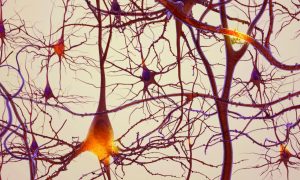
Daniel Kostic (IHPST) and Denis Forest (Paris 1 Panthéon-Sorbonne & IHPST) are pleased to announce the launch of a new interdisciplinary seminar in philosophy of neuroscience at the IHPST in Paris. The description of the seminar (both in English and in French) and a schedule can be found on this link: https://www.sites.google.com/site/danielkostic/topexseminars
The inaugural talk will be given by Jean Daunizeau (Institut du Cerveau et de la Moelle épinière, Paris) on Monday 02 October 2017 at 5 PM at the IHPST, Salle de Conférence (2nd Floor, 13 rue du Four, 75006, Paris). The title of his talk is: “Dynamic causal modelling of brain-behavior relationships”.
Abstract:
“In this work, we expose a mathematical treatment of brain-behaviour relationships, which we coin behavioural Dynamic Causal Modelling or bDCM. This approach aims at decomposing the brain’s transformation of stimuli into behavioural outcomes, in terms of the relative contribution of brain regions and their connections. In brief, bDCM places the brain at the interplay between stimulus and behaviour: behavioural outcomes arise from coordinated activity in (hidden) neural networks, whose dynamics are driven by experimental inputs. Estimating neural parameters that control network connectivity and plasticity effectively performs a neurobiologically-constrained approximation to the brain’s input-outcome transform. In other words, neuroimaging data essentially serves to enforce the biological realism of bDCM’s decomposition of input-output relationships. In addition, post-hoc artificial lesions analyses allow us to predict induced behavioural deficits and quantify the importance of network features for funnelling input-output relationships. This is important, because this enables one to bridge the gap with neuropsychological studies of brain-damaged patients. We demonstrate the face validity of the approach using Monte-Carlo simulations, and its predictive validity using empirical fMRI/behavioural data from an inhibitory control task. Lastly, we discuss promising applications of this work, including the assessment of functional degeneracy (in the healthy brain) and the prediction of functional recovery after lesions (in neurological patients).”

